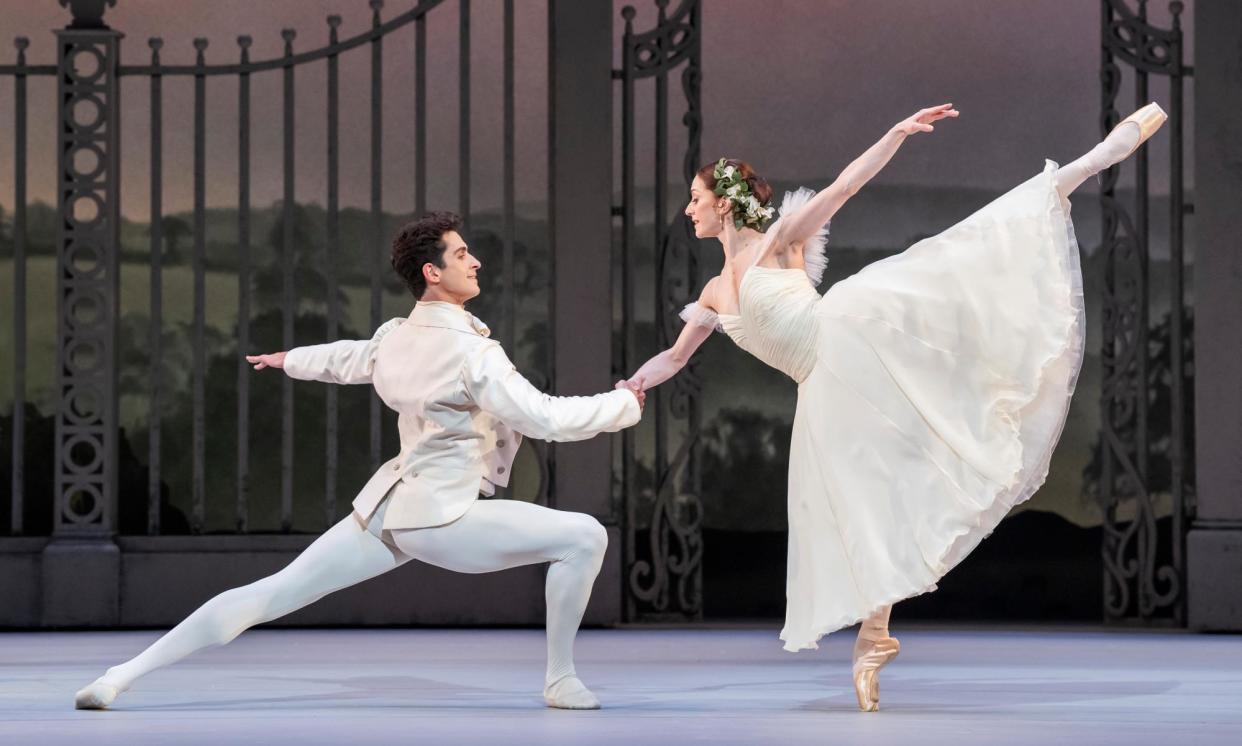Ashton Celebrated review – Royal Ballet turns traditional into timeless

When you watch the ballets of Frederick Ashton alongside the work of others, he can sometimes look traditional. Yet seeing a programme devoted entirely to his work at the start of a four-year international celebration allows the eye to catch other qualities.
All his famous musicality, his intricate footwork, his storytelling clarity are on display, but you also see his impulse to disrupt his own carefully contrived symmetry, to start from a sidelong angle and see where it takes him. In Les Rendezvous, for example, a romantic interlude set to the music of Daniel Auber, he’s always plonking women down on the floor and finding ways for men elegantly to raise them. At one moment, five men lift five women with their backs to us, pinioned motionless in the air like human pillars while a solo unfolds in front of them.
Les Rendezvous is like a meringue – built out of nothing but utterly delicious
Audaciously, he gets his leading lady (danced with sumptuous abandon by Marianela Nuñez) to flex her back while turning, as if rolling an invisible ball down her graceful arms. Or bend almost double like Ginger Rogers in her prime. Jasper Conran has provided new designs in gauzy tulle and enticing colours that make the piece look timeless rather than stuck in 1933. It’s like a meringue, something built out of nothing, but utterly delicious. And with the tang of wild berries on the side.
There are more wild berries in the misty forest in The Dream, from 1964, coached by its original Oberon Anthony Dowell to emerge as a fierce and funny masterpiece to Mendelssohn’s score. Marcelino Sambé brought authority and flashing fire to Oberon; Francesca Hayward’s Titania has a petulance that melts into tenderness. Romany Pajdak and Nicol Edmonds and Olivia Cowley and Leo Dixon were sharply humorous as the mismatched lovers, Joshua Junker a bemused Bottom and Daichi Ikarashi a fleet, flying Puck.
Tone and execution were perfect in contrast to Rhapsody, which completed the evening, but didn’t hit the mark. In a second programme, three short works featured. Five Brahms Waltzes in the Manner of Isadora Duncan saw Natalia Osipova in fine, free-flowing form, summoning Duncan’s wild spirit; Hamlet and Ophelia, a rarely seen interpretation of the nunnery scene from Hamlet, has smoky new designs by Sarah Armstrong-Jones and William Bracewell as an agonised Hamlet, but it is Hayward’s clearly defined journey into Ophelia’s madness that roots the piece. The Walk to the Paradise Garden is an oddity, best forgotten.
That apart, this is a programme that makes the revivals of the next four years a much-anticipated treat.
• Ashton Celebrated is at the Royal Opera House, London, until 22 June


